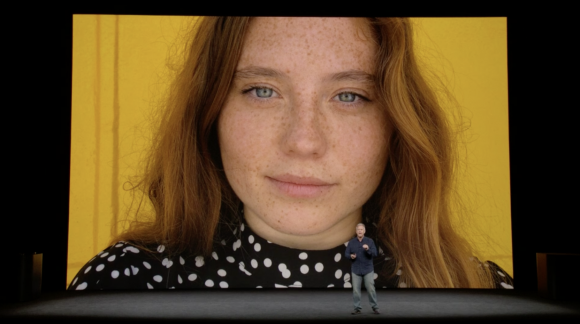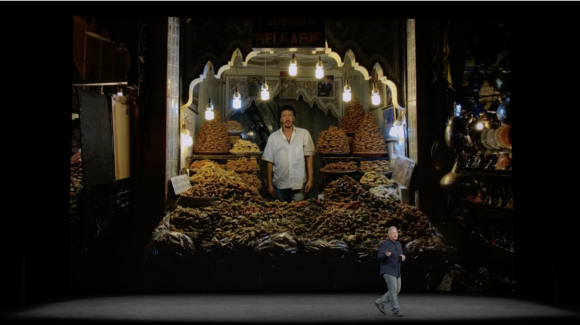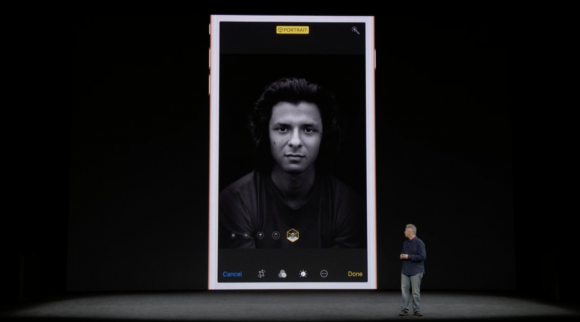Apple’s new iPhone 8 features a “fake lighting” portrait mode
posted Tuesday, September 12, 2017 at 1:12 PM EST

Today was Apple's yearly, highly-anticipated, iPhone-focused keynote and this year they strongly honored Steve Jobs. In their new Steve Jobs theater, it was a really nice gesture. There was a lot announced, from retail to product, and of course there is a lot to say about the iPhone. But this is Imaging Resource, and we are going to focus on the imaging.
After spending a lot of time talking about their new building in Silicon Valley and their new store designs, they did get to some new things for photographers. Part of that new store design is a rollout of "photo walks," where Apple retail destinations will offer a ton of new sessions including ones dedicated to learning how to take better images with your iPhone. They are even rolling out a new job there, called the "Creative Pro," which handles how to use their products like Apple "Genius" folks help you with selecting or repairing product.
The iPhone 8, and iPhone 8 Plus, have the same breakdown of dual to single lens as the current iPhone: iPhone 8 has a single lens, while 8 Plus features the dual lens (one telephoto, one wide). Apple adapts the screen color, temperature and intensity based on the ambient light around you, making the great color on the display itself adapt to your environment. This makes looking at images, and capturing them, a better overall experience.
The new six core, A11 processor, makes the phone 70% faster than the previous A10 chip. It can use all six cores at once, and dramatically improves performance over multiple apps. It has a new GPU that is 30% faster than that in the previous chip.
This helps make low light autofocus much faster. New pixel processing makes textures and sharpness better, and has hardware-based multiband noise reduction.

It has a new 12 megapixel sensor, which lets in 83% more light. Apple says it improves color and dynamic range significatnly. It has two new lenses at f/1.8 and f/2.8 apertures, the former for wide, the latter for telephoto.

Apple strongly lauded the better sharpness and low light performance.

Apple also introduced a new lighting system using both cameras on the iPhone 8 Plus, which is called Portrait Lighting (beta, but will launch with the new phone). The process will analyze a scene in Portrait mode and dynamically adjust lighting on an image to make it more like what you see in a photo studio with actual lighting. You can change and select different lighting effects. These aren't filters: they are real-time analysis of light on the subject's face. You can even go in afterwards and adjust the lighting effect the iPhone judged in real time. It seems very powerful.
Essentially, it's fake lighting. It's hard to say how this will actually perform, but it is taking a bold stance on telling consumers that they no longer need lights in order to achieve a "lit look."

As for video, Apple says it's the highest quality video in any spartphone with the introduction of 4Kp60. Their new chip allows for faster video frame rates and real-time video analysis. So while you're shooting 4Kp60, the iPhone divides each frame into 2 million tiles, and it analyzes them every second. Apple says it then optimizes it for quality and compression levels. What that actually means is yet to be determined in a real world test, but it seems promising.
It also offers 1080p240, which is extremely slow motion. That's double the framerate of the previous iPhone.
We'll update this post as we learn more, but that covers the news for what to expect in imaging for the new iPhone 8. What do you think? Does the new lighting algorithm excite or upset you? How do you think it will actually perform? let us know in the comments below.